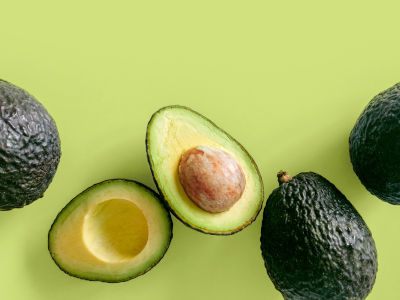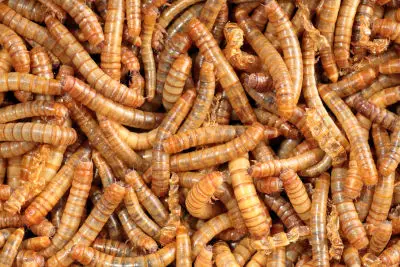Can You Get Green Bearded Dragons? (Weird Morphs?)
If you have heard people talk about green bearded dragons you may wonder if this is a myth or they really do exist (Click here to see why some Bearded Dragon owners fail, who don’t have this guide). In this article, I’m going to explain if this is true and a bit more about them.
Can you get a green bearded dragon? Yes, you can but they are quite rare. Some people believe they are a rare Bearded Dragon Morphs. But, that is not the case. They are like albinos, they exist but, you won’t see them on a regular basis.
| Are these foods dangerous for your Beardie? | |
| Avacado? Click here to learn, from this guide, if this food is dangerous |  |
| Superworms? Click here to learn, from this guide, if this food is dangerous |  |
Now that you know that they do exist, let me explain how these bad boys even came into existence. Also, what a “Morph” is, and how that is relevant to the Green Beardies, other colored Beardies you may not have heard of and more. Keep reading.
Where did these Green Bearded Dragons come from?
You may be wondering, if they are so rare, where did they suddenly appear from? Good question.
They are either a freakish natural occurrence or the products of selective breeding (more about selective breeding later on).
Furthermore, It is also quite rare to even get a completely solid color bearded dragon. The standard colors for bearded dragons is usually a mix of green and yellow and hints of brown. A blended color, rather than solid, that’s my point.
Typically, if you see a solid colored bearded dragon, it’s likely to be because of selective breeding.
What is a bearded dragon morph? (and how is this even relevant)?
As briefly discussed in the last section, morphs are a type of bearded dragon which has a different appearance to its parents.
This is typically achieved by either a natural mutation, which results in the Beardie having a different look to its parents. Alternatively, they are selectively bred to make it happen (more on this later).
Morphs are more than just colors
For your info, a true morph does not only mean a specific color, but it can also have different behavioral traits, spikes on its body, or other vidual differences that make it different from the norm.
Many people are under the misconception that it describes the color of their skin. But, in reality, there are a number of things that could classify it as a morph.
Other features could include:
- Scales.
- Different Head shape.
- etc.
The key factor is, they have distinctly different features to the standard Bearded Dragon.
How does selective breeding impact their color?
Selective breeding is an organized way to create a very specific type of bearded dragon. If nature is left to its own devices the color of the bearded dragon has a lot to do with its actual environment and habitat.
However, with selective breeding (Click here to see where these Bearded Dragons lay their eggs), a breeder will purposely get two specific types of bearded dragon together to form baby lizard with desired colors or features.
They purposely do this so that they can sell them. And, they can usually charge more for this, hence the reason why most of them do this.
These rare morphs I usually expensive. Why? Because of the classic economics of supply and demand. They are sought after due to the fact that there is a lack of supply.
For example, if a breeder wanted to get a red-bearded dragon (more about this morph later). He will get a male and a female that have distinctive red coloration. In an effort to selectively breed a deep red Beardie for re-sell.
What different types of colored bearded dragons are there?
Apart from Green Beardies, there are other color variations. Let’s look at these variations now…
The red-bearded dragon
As briefly discussed in the last section you can get red-bearded dragons. It’s obvious that they are red, that goes without saying. The process to get them here is based on combining two Beardies that have distinctive red coloration.
Going forward, the hope is, further generations of breeding can deepen their distinctive red color. This typically the key factor drive up their resale value.
Other variations of the red-bearded dragon include a “Ruby Red” or “Blood Red”.
Yellow bearded dragons
Yellow bearded dragons, as you can imagine, are the products of combining two predominantly yellow bearded dragons.
However, when you mix a yellow bearded dragon with a red-bearded dragon you typically get a gold bearded dragon variation.
Other yellow-based bearded dragons include the:
- Sandfire Gold
- Lemon Fire
- Citrus
White-bearded dragon
The white-bearded dragon is typically identified by either having a distinct white coloration or having an almost clear looking skin.
As you can imagine, they are bred by combining two lightly colored Beardedies. An example of two of these morphs is:
- Albino.
- Snow Bearded Dragon.
“Why has my Beardie turned green?”
With all this talk about green bearded dragons, there are certain instances where you may have a different colored bearded dragon but for some unknown reason, it starts to change color, in particular, to a green color.
This is different from a Green Bearded Dragon because it’s actually changing color. so, why could this be happening?
According to this forum, this is likely to do with skin shedding…
Usually, this is nothing to worry about and is a natural part of the process. However, if this is the case, you should look out for other known shedding related issues.
Like what? Known issues with skin shedding typically revolve around the shed not finishing completely. Meaning, your lizard is left with some old skin left behind.
This can lead to discomfort and potential infection. If there are any issues or concerns about this, it’s better to consult your vet.
Related questions:
In this section, I am going to answer some questions related to Green Bearded Dragons. If you have any questions you would like answered, feel free to drop a comment below.
Q: Why is my bearded dragon changing colors?
We briefly discussed issues with your bearded dragon changing green. However, recent studies mentioned here concluded that some color change, in particular, specific body parts of the bearded dragon, could be linked to temperature regulation and social signals.
For example, the change of coloration on the lizard’s neck is deemed as a social signal to other lizards. However, if there’s color change on their back, in particular, dark coloration and the temperature is pretty cool. This could be to reduce their required basking time in the sun.
Q: Do bearded dragons get more colorful?
You may be wondering if Beardies have the ability to change their color. The reality is, they can. They have the ability to change the pigment in their skin. This is typically triggered by their mood or reactions to their environment.
For example, in the wild, you may notice that a Beardies skin will change color at different times in the day. In particular, in the morning while they are basking, they are likely to have slightly darker coloration.
Why? Because this will help them to absorb more sunlight. Which, in turn, will help to reduce their basking time. Are you with me?
Q: Can bearded dragons feel love?
Yes. But, to be honest, this is a subjective answer. The reality is, nobody can really say yes 100%. However, there are some logical conclusions that can be drawn here, bare with me…
If you have a Beardie you will notice that they do show signs of affection. In addition, they also have a friendly and approachable demeanor. Especially around their owners. This, in my opinion, suggests they can understand love, in their own way.
Q: Do bearded dragons like being petted?
Yes. I would say so. Put it this way, it is commonplace to see a Bearded Dragon owner handling and cuddling their Beardie. This is one of the reasons they are so popular.
The reality is, we really do not know what goes on in their head, but the signs look positive, are you with me?